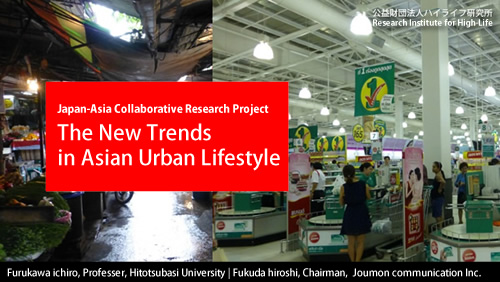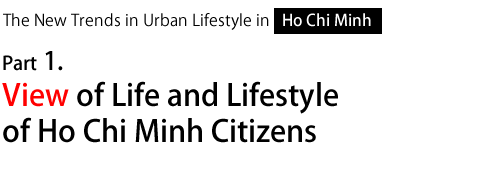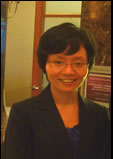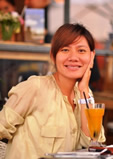Ho Chi Minh | Part1 View of Life and Lifestyle of Ho Chi Minh Citizens
Japan-Asia Collaborative Research Project
Study report "The New Trends in Asian Urban Lifestyle"


"The New Trends in Urban Lifestyle in Ho Chi Minh" (serial in 4 parts)
Part 1 View of Life and Lifestyle of Ho Chi Minh Citizens
DO My Hien, Ph.D student at Nagoya University, Graduate School of International Development. Lecturer at Foreign Trade University, Ho Chi Minh City.
NGUYEN THI BICH THUY, Hanoi Foreign Trade University, Ho Chi Minh City, Japanese lecturer.
Summary
With an elongated shape of land stretching from north to south, Vietnam has distinctive geographical characteristics and diversified traditional cultures and lifestyles of Northern, Central and Southern areas. The nation is officially called the Socialist Republic of Vietnam. The population is 87.84 millions. The nominal GDP is 123.6 billion dollars (2011), and the land area is approximately 0.33 million km2, which is as wide as that of Japan exclusive of Kyushu. The people are very pro-Japanese.
Since 1986, Vietnam has achieved economic growth thanks to the Doi Moi (renovation) policy, and in spite of such problems as inflation or income gap, the life of urban residents has certainly become affluent. Especially Ho Chi Minh City has promoted urbanization owing to population influx and rapid economic growth spurred by Japanese, Asian, and Western companies moving in the city and remittance from Viet Kieu. At the same time, the civil life has dramatically improved to bring about a new urban lifestyle. As a result, Vietnamese traditional sense of values and form of families have largely varied. This report considers the current status and trend of Ho Chi Minh City, the challenges it faces and violently changing lifestyle and work style of the citizens.
Part 1 grasps the history of Ho Chi Minh City (former Saigon) and current economy. Also the Vietnamese basic sense of values and different compositions of the Northern, Central and Southern peoples, and lifestyle in lively Ho Chi Minh City are examined. Finally, the roles of female in Vietnam are extremely important; the activities of women who contribute to the nation, the society, and their families are reported.

Principal Author DO My Hien
2002 Hanoi Foreign Trade University, International Economics Faculty, Japanese Language Department, BA Joined Canon Vietnam, HR Department
2006 Shinshu University Graduate School, Division of Industrial and Social Studies, MA in economics
2007~ present Nagoya University, Graduate School of International Development, PhD program
2011~Feb.2013 Lecturer at Foreign Trade University, Ho Chi Minh City (History of Economic Thought) Fields of Research: Rural Development, Development Economics, History of Economic Thought

Principal Author NGUYEN THI BICH THUY
1999 Ho Chi Minh City University of Social Sciences & Humanities, enter Department of Oriental Studies
2001 Kobe University, Faculty of Intercultural Studies
2003 Graduated from Ho Chi Minh City University of Social Sciences & Humanities
2009 Japanese Instructor at Ho Chi Minh City University of Social Sciences & Humanities
2011 Columbia Southern University in the US, Completed Master’s program of Marketing
2011 Hanoi Foreign Trade University, Ho Chi Minh City, Japanese lecturer
2012 Bulacan State University, Doctor’s program of Management
2013 Saigon Arts College Assistant to the Headmaster
Field of Research: Cross culture of Japan and Vietnam
Field of Business: 2009 Founded Lapis School of Japanese
2010 Founded Aqua Palace Wedding & Event Hall
Co-Researcher:
Furukawa Ichiro, Professer, Hitotsubasi University
Fukuda hiroshi, Chairman, Joumon communication Inc.
Editing and Delivery Public-Interest Incorporated Foundation
Research Institute for High-Life http://www.hilife.or.jp/